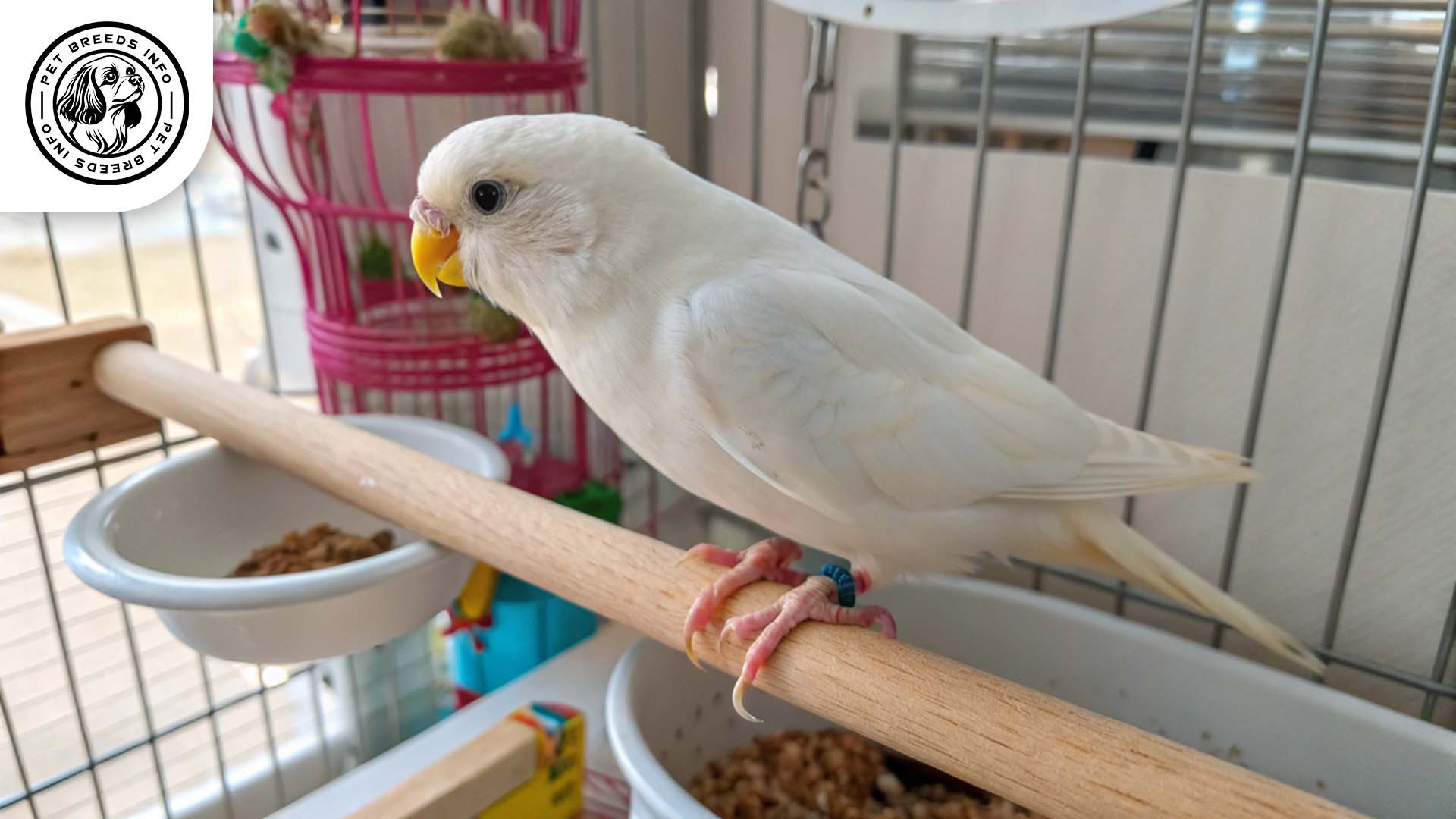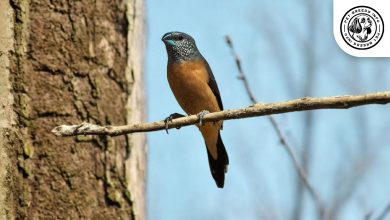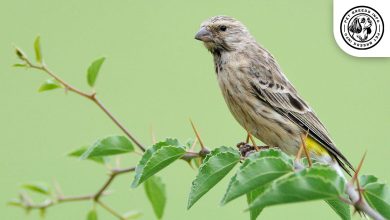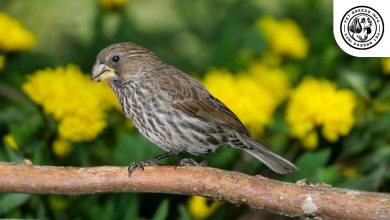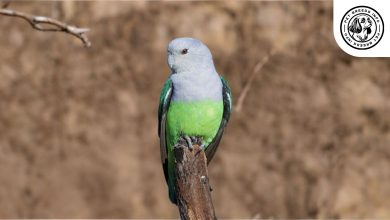Albino Budgerigar Bird: Personality, Lifespan, Food & Care
General Introduction of the Breed
The Albino Budgerigar, commonly known as the Albino Budgie, is a striking variety of the standard Budgerigar (Melopsittacus undulatus). Native to Australia, this parakeet is a selectively bred mutation featuring a pure white body and striking red eyes.
The Budgerigar species was first recorded in the 1800s and later gained popularity as a pet worldwide. Albino Budgies specifically result from genetic mutations affecting pigmentation, combining blue and ino (Ino reduces melanin, leading to the red-eyed white variation).
Table of Contents
| Common Name | Albino Budgerigar |
| Scientific Name | Melopsittacus undulatus |
| Origin | Australia |
| Size | 18 cm (7 inches) |
| Lifespan | 7–12 years |
| Colors | Pure white feathers with red eyes |
| Talking Ability | Moderate; can learn words and whistles with training |
| Noise Level | Moderate – may chirp frequently if bored or unstimulated |
| Social Behavior | Highly social, bonds well with humans and other birds |
Physical Characteristics
Albino Budgerigars are small-sized parrots, typically measuring around 18 cm (7 inches) in length and weighing between 30-40 grams. They have a smooth feather coat, which is entirely white due to the lack of melanin.
Their eyes are a distinct deep red color, and their cere (the area above the beak) is pinkish or pale blue depending on gender. Male Albino Budgies typically have a more bluish cere, while females have a whitish or brownish cere.
They have a short, curved beak, long tail feathers, and strong zygodactyl feet (two toes forward, two backward) for excellent perching abilities.
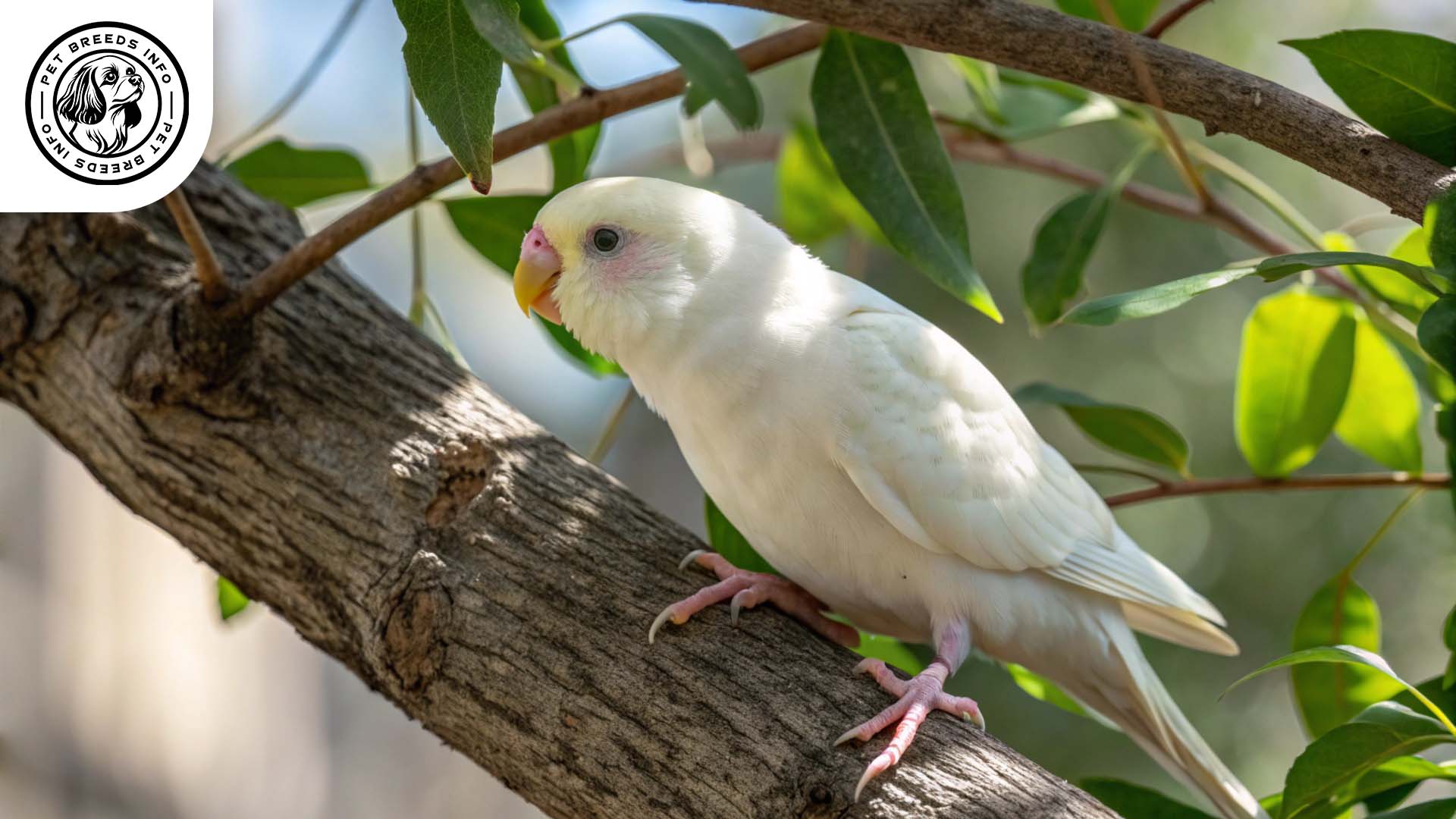
Personality and Temperament
Albino Budgerigars are highly intelligent and can learn tricks, words, and whistles when trained properly. They are energetic, playful, and social birds that thrive on interaction with their owners.
They form strong bonds with humans and other birds and enjoy group activities. These budgies are excellent pets for families and individuals alike, provided they receive regular socialization.
While they are generally friendly, early handling and socialization are necessary to prevent shyness or fearfulness.
Read More: American Budgerigar Bird
Care and Maintenance Requirements
Albino Budgerigars require a spacious cage with perches and toys to keep them entertained. Daily interaction and out-of-cage time are important for their mental and physical well-being.
Their feathers do not require extensive grooming, but regular cage cleaning and fresh water access are essential. Albino Budgies are more sensitive to direct sunlight due to their lack of pigmentation, so they should be kept in a shaded environment to prevent eye strain.
Regular nail trimming may be necessary, and providing a cuttlebone helps maintain beak health.
Diet and Nutrition
A well-balanced diet for an Albino Budgerigar consists of high-quality seeds, pellets, fresh vegetables, and occasional fruits. Dark leafy greens, carrots, and broccoli are excellent choices.
Toxic foods to avoid include chocolate, avocado, onions, garlic, and salty or sugary treats.
Ensure they have access to fresh drinking water at all times, and portion control should be maintained to prevent obesity.
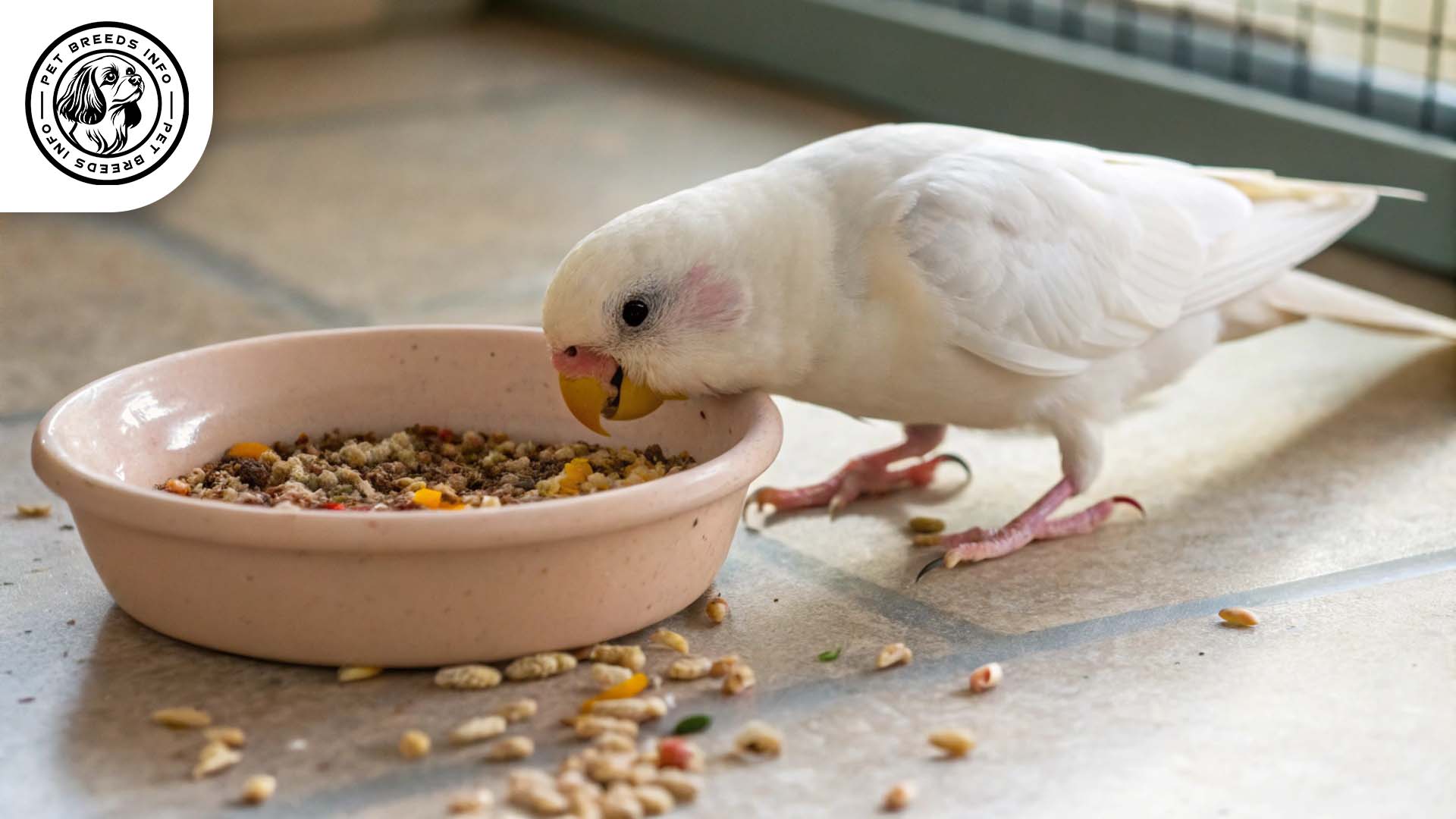
Health and Common Medical Issues
Albino Budgerigars generally have a lifespan of 7-12 years with proper care. Common health concerns include respiratory infections, beak overgrowth, and feather plucking due to stress or boredom.
Because they have a genetic mutation, some Albino Budgies may be prone to weaker eyesight and light sensitivity.
Regular veterinary check-ups, a clean environment, and a nutritious diet help prevent most common illnesses.
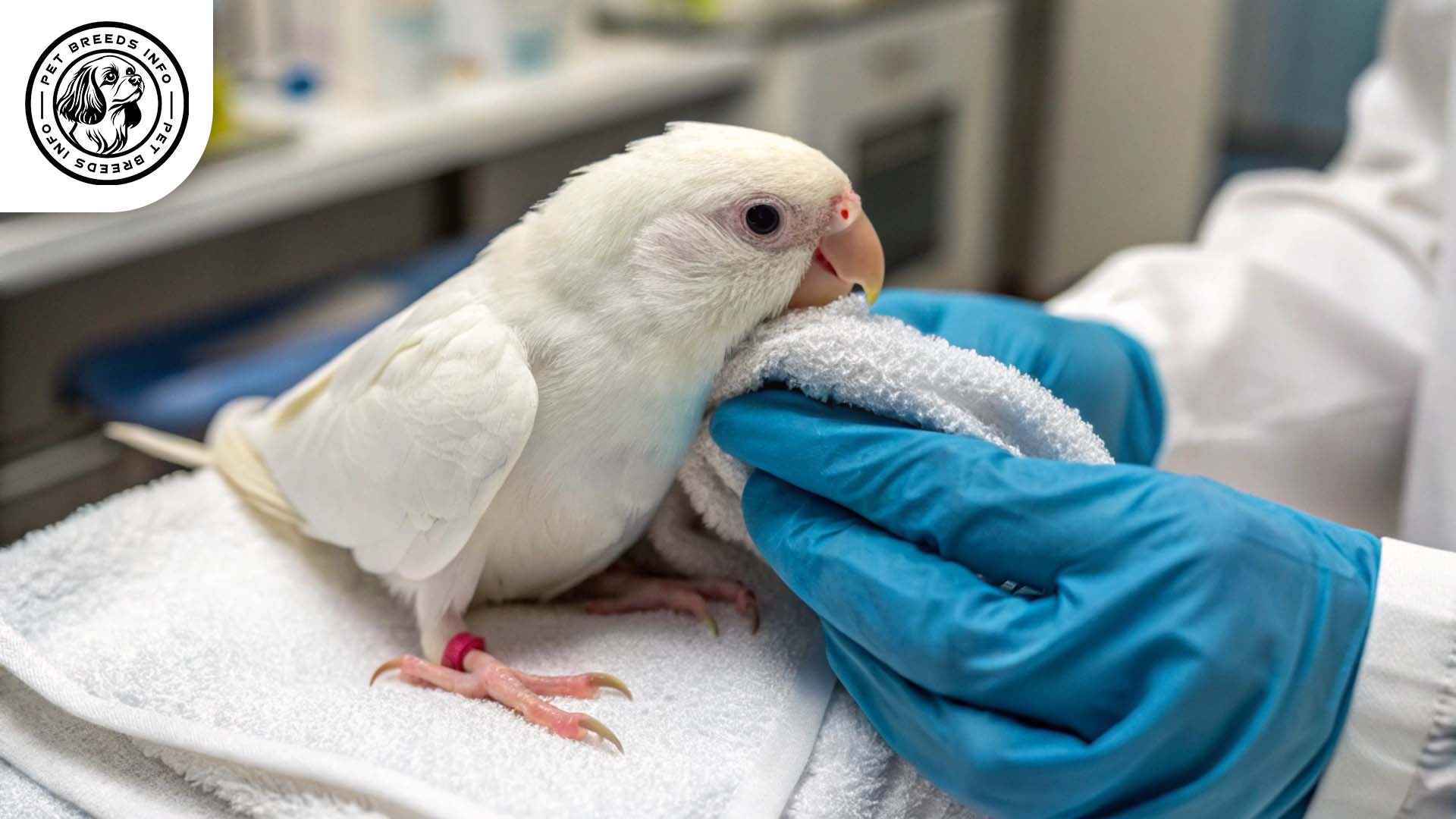
Training and Behavior Management
Albino Budgies are intelligent and can be trained using positive reinforcement techniques such as treats and vocal praise. They respond well to consistency and patience.
They should be handled regularly to promote trust and socialization. Teaching them basic commands, tricks, and even words can enhance their bond with owners.
Early training is encouraged to prevent unwanted habits like excessive chirping or biting.
Read More: American Buff Goose Bird
Interaction with Other Animals and Humans
Albino Budgerigars are highly social birds and enjoy companionship. They get along well with other budgies and some compatible bird species.
They are great for families but require careful supervision when handled by very young children to prevent accidental injury.
They are affectionate and thrive on human interaction, making them a wonderful pet for individuals seeking a friendly companion.
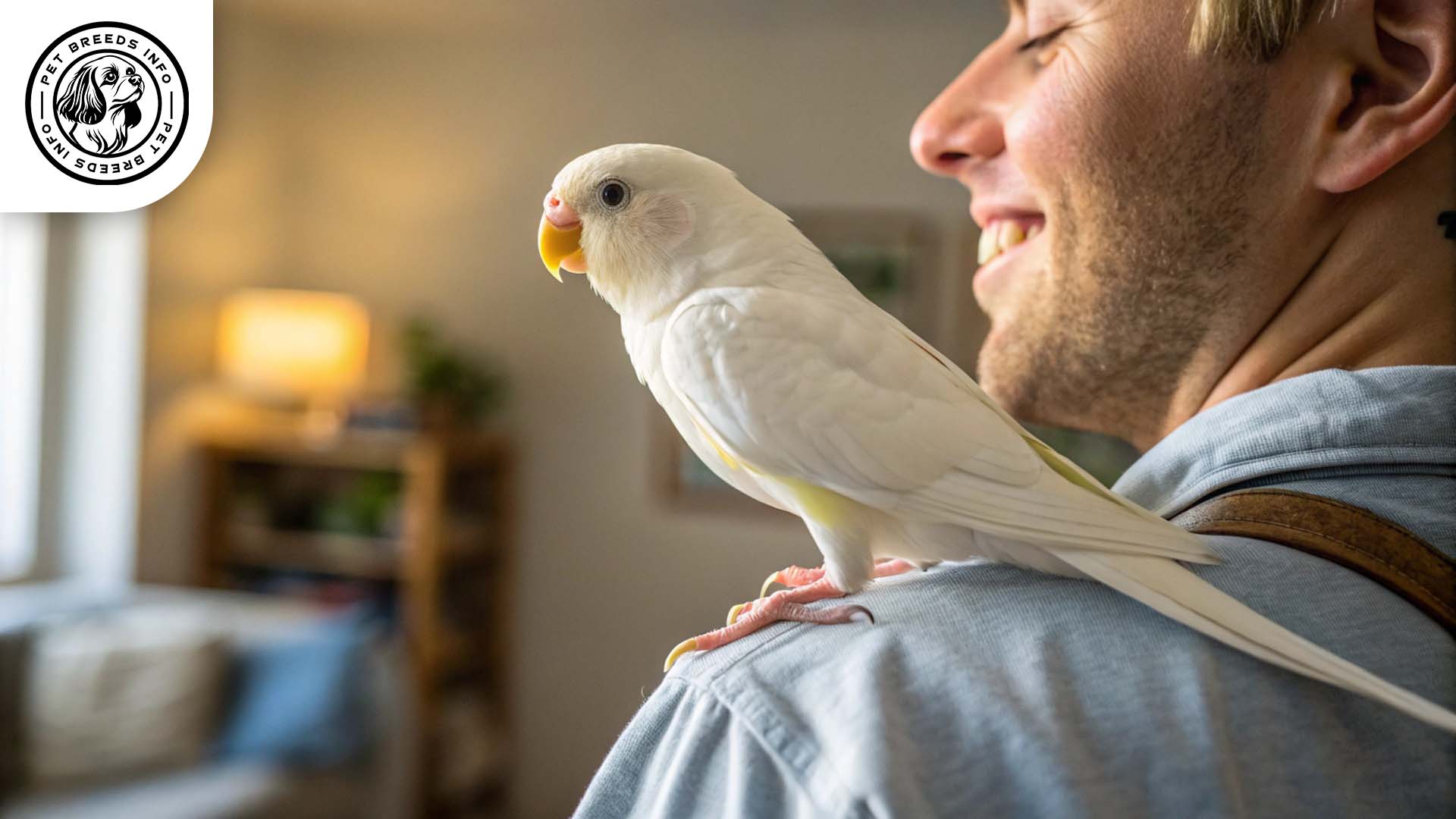
Price and Availability
The price of an Albino Budgie varies depending on the breeder and location but typically ranges from $20 to $50. Prices may be higher for hand-raised or specially bred birds.
It is advisable to acquire one from a reputable breeder or a rescue center to ensure a healthy bird.
Buyers should check for signs of good health, including clear eyes, smooth feathers, and active behavior, before purchasing.
Read More: American Singer Canary Bird
Conclusion and Final Thoughts
The Albino Budgerigar is a visually stunning and affectionate pet, ideal for bird enthusiasts who can provide regular attention and social interaction.
They are adaptable to most home environments, including apartments, as long as they have ample space to fly and play.
Potential owners should be prepared for their social nature and commitment to long-term care to ensure a happy and healthy life for their feathered companion.
FAQ
What makes Albino Budgies unique?
Their all-white plumage and red eyes are caused by a rare genetic mutation.
Are Albino Budgies good pets for beginners?
Yes, they’re friendly, low-maintenance, and bond easily with consistent care.
How long do Albino Budgerigars live?
With proper care, they live between 7 and 12 years on average.
Do Albino Budgies require special care?
They’re sensitive to light and need shaded areas, clean cages, and social time.
What do Albino Budgies eat?
They eat seeds, pellets, leafy greens, and some fruit. Avoid toxic or sugary foods.
